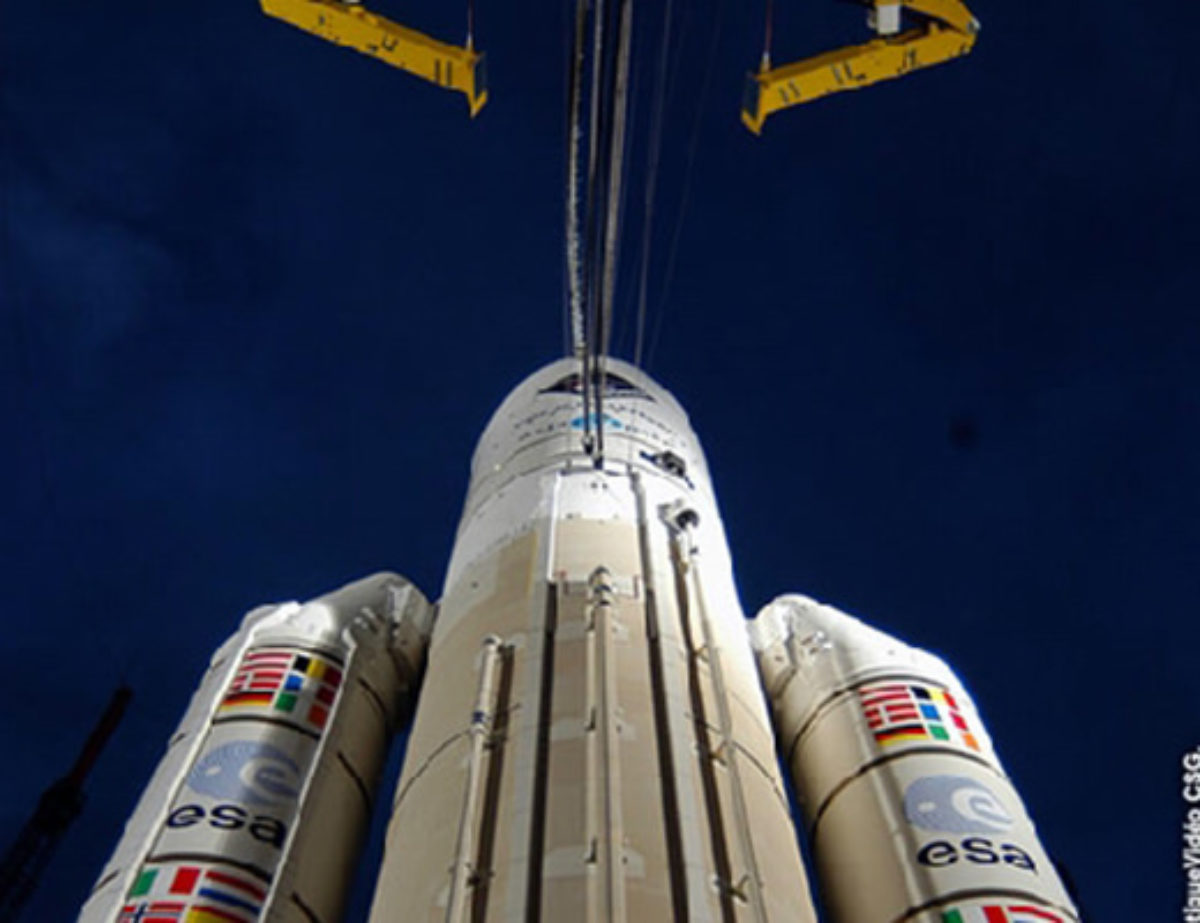
Rotate your tablet
for a better experience


Rotate your tablet
for a better experience
Early on the morning of 2 March 2004, Ariane 5 injected the 3-tonne Rosetta interplanetary probe into a circumsolar orbit, as the starting point for a 7 billion kilometre, 10-year journey to comet 67P/Churyumov-Gerasimenko.
In order to get this unique mission off to the best possible start, the 5G+ version of Ariane 5 was fitted with a new storable propellant upper stage (EPS) with a delayed ignition capability and which was for the first time able to achieve the escape velocity needed to propel Rosetta.
Instead of immediate ignition following its separation from the final stage – as is the case with the ‘usual’ satellite launches into geostationary transfer orbit – the EPS upper stage initiated an unpowered ballistic flight with Rosetta of about two hours. The upper stage then ignited for 16 minutes, giving the spacecraft the velocity it needed (37,476 km/hour) to escape the Earth’s gravitational pull and achieve circumsolar orbit. Fifteen minutes later, the probe separated from the launcher stage and began its voyage.
The flight by Ariane 5 that day was exceptional and the engineers accomplished an incredible feat in developing the EPS which enabled Rosetta to be injected into the required hyperbolic escape orbit. In order to control the internal temperature of the upper stage during the ballistic flight phase, it
rotated around its longitudinal axis. This ‘barbecue mode’ prevented sunlight from heating just one area of the stage by distributing it uniformly. The propellants were also preheated in order to guarantee correct ignition of the stage.
And afterwards?
In August 2014, after a 10-year journey, during which Rosetta examined a number of asteroids that it passed along the way, the probe entered orbit around ‘Chury’, where for nearly two years it conducted the most complete survey ever performed of a comet. In November 2014, Rosetta deployed its Philae lander to the surface of the comet, with which it then lost contact. The Rosetta mission ended on 30 September 2016, when the probe was intentionally crashed onto the surface of the comet. Thus ended a mission which had gathered a colossal quantity of data to help us gain a clearer understanding of the changes that have occurred since the birth of the solar system, as comets are considered to be remnants of the first primitive matter.
Key figures
The greatest velocity ever attained by Ariane was 10,410 m/s, or 37,476 km/h, to send the Rosetta probe on its interplanetary trajectory, on an Ariane 5 G+. At that speed, the journey from Paris to New York would take just 9 minutes and 22 seconds.
Rosetta had 24 small thrusters for acceleration, deceleration and stability in space. Each one output a thrust of 10 newtons (10 N), which, in equivalent terrestrial terms, was enough force to hold a bag containing about ten apples. At launch, Rosetta carried 1,650 tonnes of fuel in its two tanks – representing more than half of the lift-off mass – so that it could provide its thrusters with sufficient power during the duration of its long journey through the universe.
Rosetta: 116,000 images collected, 14,000 hours of contact during 2,500 link-ups with the Estrack terrestrial antenna array, about ten years expected to be necessary for analysis of all the data collected.
